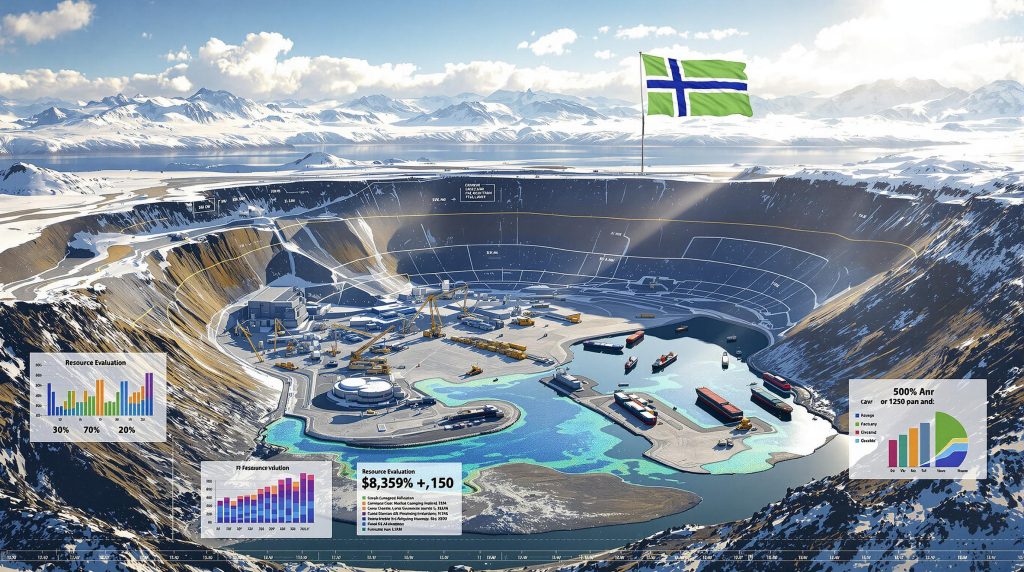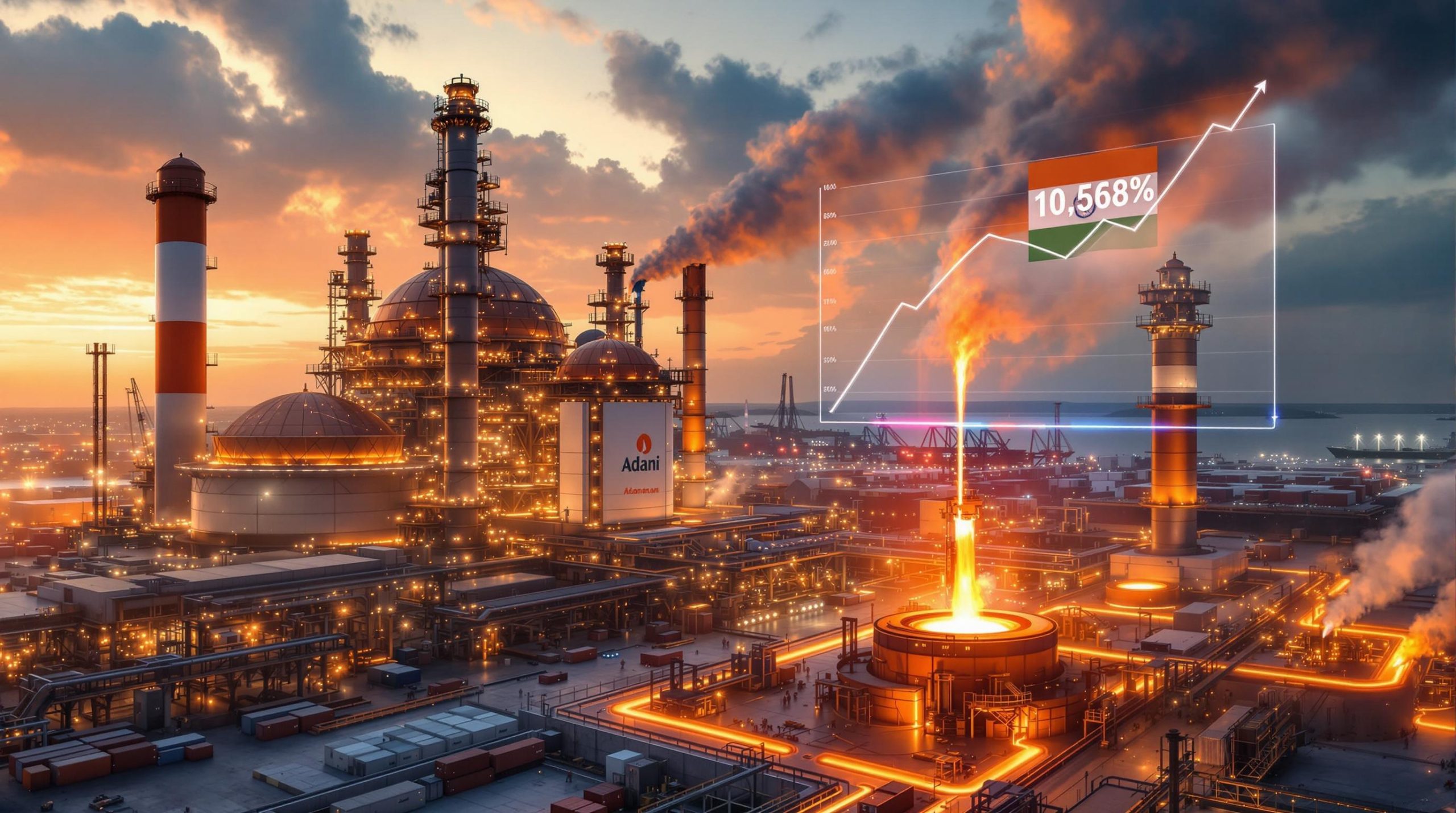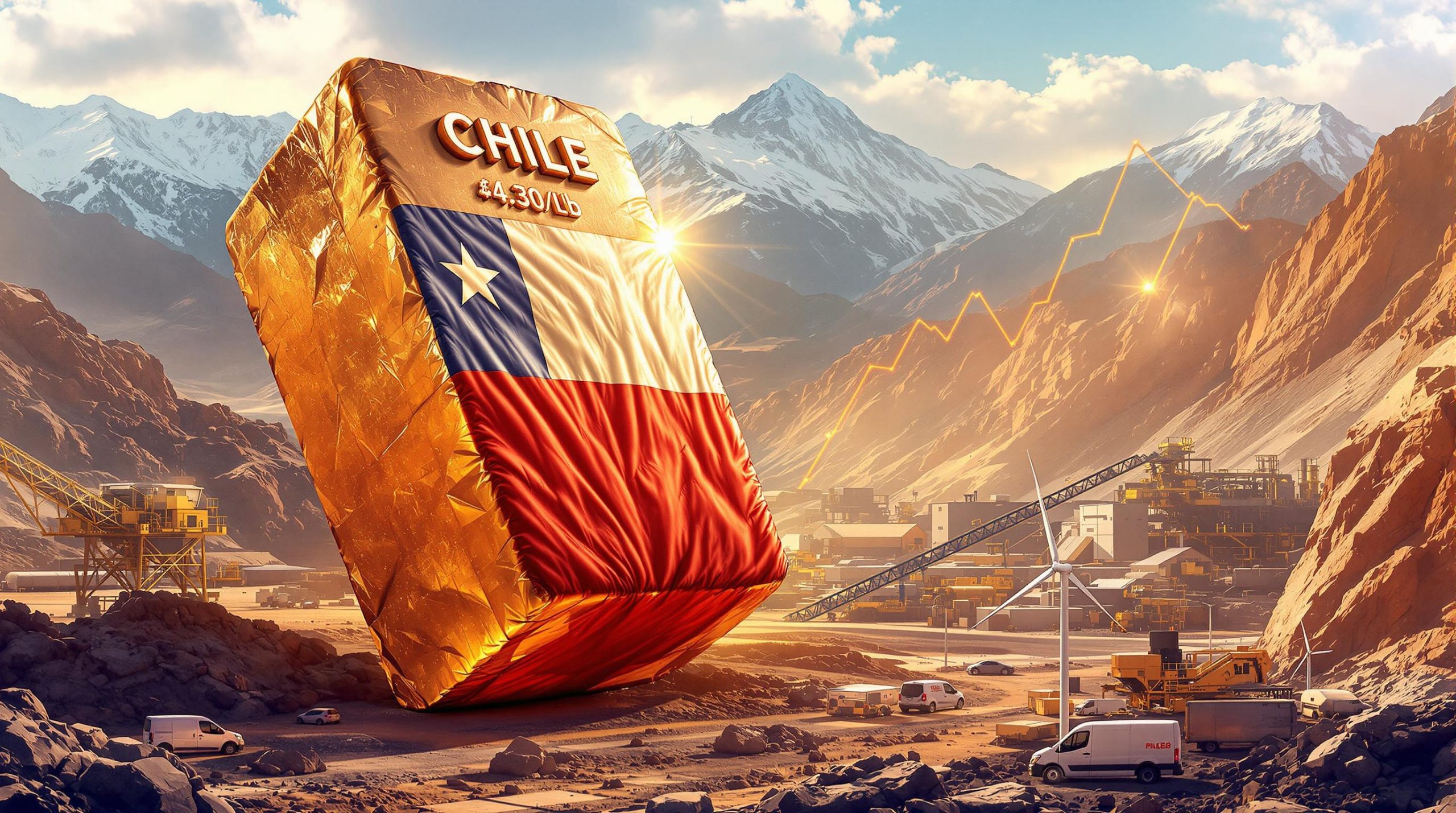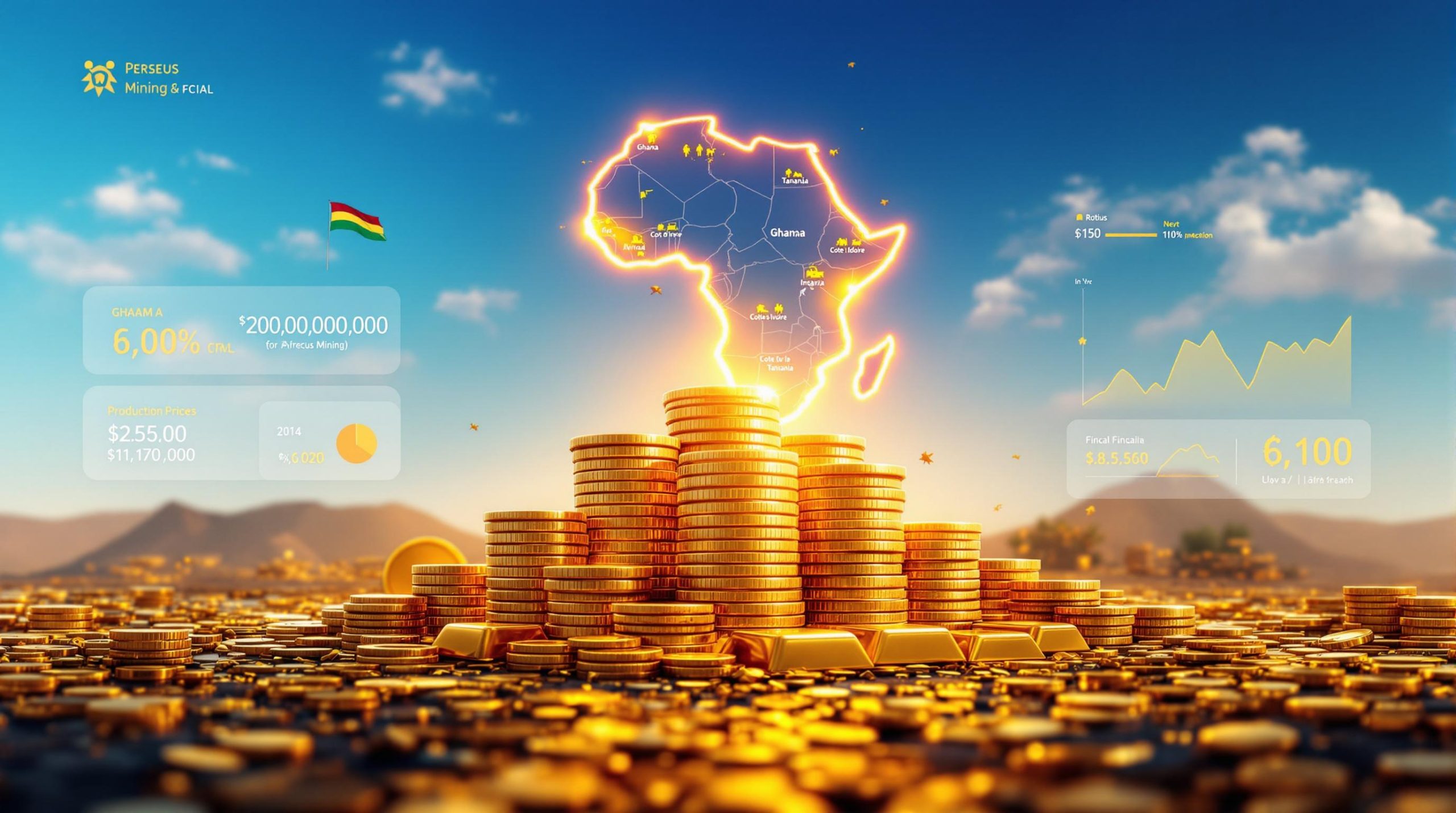What is a Definitive Feasibility Study (DFS) and Why is it Critical for Mining Projects?
A Definitive Feasibility Study represents the final and most comprehensive technical and financial assessment of a mining project before development decisions are made. This detailed evaluation serves as the foundation for securing project financing and proceeding with construction. For major mining operations like the Tanbreez rare earths project in Greenland, a DFS provides the detailed roadmap that transforms geological potential into commercial reality.
Unlike preliminary assessments, a DFS delivers financial projections with high confidence levels (typically ±10-15% accuracy) that investors and lenders require before committing substantial capital. The comprehensive nature of this document reflects its status as the culmination of years of exploration, testing, and engineering work.
Key Components of a Mining DFS
Resource Evaluation: A DFS contains meticulously verified mineral reserve calculations based on extensive drilling, sampling, and geological modeling. These reserves must be classified according to international reporting standards (like JORC or NI 43-101) to establish credibility with financial institutions.
Mine Design: Engineers develop detailed extraction plans that specify mining methods, equipment requirements, and production sequencing that maximize resource recovery while maintaining operational safety and efficiency. For the Tanbreez project, this includes "final mine design and production scheduling for bulk mining of stratiform kakortokite-hosted mineralisation," according to project documentation.
Processing Requirements: The DFS outlines comprehensive engineering specifications for mineral processing facilities, including flowsheet development, equipment selection, and metallurgical recovery projections. For Tanbreez, this encompasses "process plant engineering for feldspar, arfvedsonite and eudialyte concentrates," highlighting the multi-product nature of the operation.
Infrastructure Planning: Detailed assessments of all required support systems, including power generation, water management, access roads, and port facilities. Tanbreez benefits from "material handling, logistics and export options via the fjord system," providing natural deep-water access for shipping.
Environmental Considerations: Thorough environmental impact assessments, waste management solutions and rehabilitation plans are essential components. The Tanbreez DFS will integrate "environmental and social impact assessment findings" to address these critical aspects.
Capital and Operating Costs: The financial backbone of the DFS includes detailed estimates of construction costs, ongoing operational expenses, and lifecycle maintenance requirements. Tanbreez documentation indicates the DFS will provide "capital and operating cost estimates" with high accuracy.
Implementation Schedule: A realistic timeline for construction, commissioning, and production ramp-up informs financing needs and revenue projections. The Tanbreez DFS will include "project implementation and construction planning" to map this critical path.
Risk Assessment: Comprehensive analysis of technical, financial, regulatory, and market risks along with appropriate mitigation strategies to increase project resilience.
Tony Sage, executive chairman of European Lithium and chairman/CEO of Critical Metals, emphasized the importance of this document: "Engaging NIRAS is a key development in advancing our efforts to commercialise our world-class Tanbreez Project, as the DFS is an essential technical report that positions the mine for future production."
How Does the Tanbreez Rare Earths Project Compare to Global Competitors?
The Tanbreez project in Greenland stands out in the global rare earths landscape due to several distinctive characteristics that position it uniquely in the market. While countries like China, Australia, and the United States dominate current production, Tanbreez represents a potential major new source in a geopolitically stable region.
Tanbreez's Competitive Advantages
Massive Resource Base: With an estimated 4.7 billion tonnes of rare earth-bearing mineralization, Tanbreez ranks among the world's largest rare earth deposits. This exceptional scale provides decades of production potential at significant output levels.
Favorable Mineralogy: One of Tanbreez's most significant advantages is its naturally low uranium and thorium content. Many rare earth deposits worldwide contain problematic levels of these radioactive elements, which complicate processing, increase environmental concerns, and add regulatory hurdles. Tanbreez's cleaner profile simplifies development pathways.
Strategic REE Profile: The deposit contains approximately 27% heavy rare earth oxides in its total REE content. Heavy rare earths typically command premium prices due to their scarcity and critical applications in high-tech and defense technologies. This favorable distribution enhances the project's economic potential.
Logistical Advantages: Located near Qaqortoq in southern Greenland, the project benefits from year-round deep-water fjord access for direct shipping to North Atlantic markets. This natural infrastructure significantly reduces capital requirements compared to remote inland deposits requiring extensive transportation infrastructure.
Regulatory Environment: Greenland offers a stable mining jurisdiction with established regulatory frameworks through its Mineral Licence and Safety Authority (MLSA). The Tanbreez DFS will form the central component of the updated exploitation licence submission to this authority.
Processing Simplicity: The project's mineralogy allows for more straightforward concentration processes compared to many competing deposits. The DFS will outline processing pathways for multiple valuable minerals, including feldspar, arfvedsonite, and eudialyte concentrates, diversifying potential revenue streams.
When compared to major producers like China's Bayan Obo or Australia's Mount Weld, Tanbreez offers the advantage of potentially lower environmental impact due to its favorable mineralogy. Unlike many projects still in development stages, Tanbreez has progressed to the advanced DFS phase with clear commercialization pathways.
Why Are European Companies Investing in Greenland's Mineral Resources?
European companies are increasingly looking to Greenland as a strategic source of critical minerals to reduce dependency on dominant suppliers and secure sustainable supply chains. This strategic pivot reflects broader geopolitical concerns about resource security in an era of technological transformation and climate action.
Strategic Importance of Greenland's Mineral Wealth
Supply Chain Security: Europe currently faces significant dependency on imports for most critical minerals, with China dominating global production of rare earths (approximately 85% of global supply). Investments like European Lithium's involvement in the Tanbreez project represent efforts to diversify supply sources and reduce vulnerability to market disruptions or trade tensions.
Geopolitical Stability: Greenland offers a politically stable jurisdiction with transparent regulatory frameworks under Danish influence. This stability contrasts with some traditional mining regions that face political instability or opaque governance structures.
ESG Considerations: European investors increasingly prioritize projects with strong environmental, social, and governance profiles. Greenland's modern regulatory framework and projects like Tanbreez (with naturally low radioactivity levels) align with these priorities better than some legacy operations in other regions.
Proximity to European Markets: Reducing transportation distances provides both economic and environmental benefits, with shorter supply chains offering reduced carbon footprints and potentially lower logistics costs for European end-users.
Technological Alignment: Greenland's mineral endowment includes elements critical for technologies at the heart of European industrial strategy, including renewable energy infrastructure, electric vehicles, and digital technologies. The rare earths at Tanbreez directly support these strategic sectors.
Policy Support: The European Union has identified critical raw materials as a strategic priority, with initiatives like the European Raw Materials Alliance and the Critical Raw Materials Act creating supportive frameworks for investments in new supply sources. European companies are responding to these policy signals by securing upstream resources.
European Lithium's strategic positioning through its majority stake in Critical Metals demonstrates this broader trend, giving it exposure not only to the Wolfsberg Lithium Project in Austria but also to Greenland's rare earth potential through the Tanbreez project.
What Role Do Global Engineering Consultancies Play in Mining Projects?
Engineering consultancies provide essential expertise throughout the mining project lifecycle, from early exploration to closure planning, with particularly critical roles during feasibility studies. Their technical knowledge, regulatory experience, and multidisciplinary capabilities help bridge the gap between geological potential and commercial reality.
NIRAS's Role in the Tanbreez Project
Technical Expertise: NIRAS brings specialized mining and processing knowledge developed over decades of consultancy work. Founded in Denmark in 1956, the firm has grown into a multidisciplinary consultancy with more than 3,000 staff across 62 offices worldwide, providing the depth of expertise needed for complex resource projects.
Regulatory Navigation: NIRAS offers valuable experience with Greenland's permitting framework. This is exemplified by the appointment of Anders Isak Stig-Jørgensen as project manager, who will represent Tanbreez in dealings with the MLSA, municipal authorities, and local stakeholders.
Stakeholder Engagement: Effective communication with local communities, regulatory authorities, and other interested parties is crucial for project success. NIRAS's local presence and understanding of Greenlandic context facilitates these essential relationships.
Environmental Management: Developing sustainable approaches to resource extraction requires specialized knowledge of best practices, regulatory requirements, and innovative solutions. NIRAS will integrate environmental and social impact assessment findings into the DFS, ensuring sustainability considerations are built into project design.
Risk Mitigation: Identifying and addressing potential challenges before they impact development is a core function of consultancies during the DFS process. This proactive risk management improves project resilience and investor confidence.
Financial Optimization: Balancing capital expenditure with operational efficiency requires experienced judgment informed by benchmark data across similar projects. NIRAS will develop capital and operating cost estimates and updated financial modeling with sensitivity analysis.
Implementation Planning: Creating realistic timelines and execution strategies prevents costly delays and budget overruns. The Tanbreez DFS will include comprehensive project implementation and construction planning to establish a clear pathway to production.
Tony Sage highlighted the value of this partnership: "We look forward to partnering with NIRAS, a well-respected firm both in Greenland and globally, to help us unlock enormous value at the Tanbreez Project." This statement reflects the critical trust relationship between mining companies and their technical consultants.
How Are Rare Earth Projects Evaluated for Commercial Viability?
The commercial assessment of rare earth projects involves unique considerations beyond those of conventional mining operations due to complex processing requirements and specialized markets. Investors and developers must navigate technical complexities alongside unusual market dynamics to determine viability.
Key Evaluation Criteria for Rare Earth Projects
Mineralogical Composition: The specific rare earth elements present and their relative proportions dramatically impact project economics. Heavy rare earths (like dysprosium and terbium) typically command higher prices than light rare earths (like cerium and lanthanum). Tanbreez's approximately 27% heavy rare earth oxide content represents a favorable distribution compared to many competing deposits.
Processing Complexity: The ease of separation and concentration significantly affects capital and operating costs. Rare earth elements are chemically similar and often difficult to separate, making processing technology a critical success factor. Tanbreez's evaluation includes detailed process plant engineering for multiple mineral concentrates.
Radioactive Element Content: Levels of uranium and thorium affect handling requirements, waste management costs, and regulatory pathways. Tanbreez benefits from naturally low levels of these elements, simplifying development compared to many competitors.
Market Demand Profile: Alignment with current and projected demand for specific elements determines revenue potential. Certain elements face supply constraints while others experience oversupply, creating complex pricing dynamics. The DFS will need to incorporate realistic market projections for each product stream.
By-product Potential: The value of additional minerals that can be recovered often enhances project economics. Tanbreez's multi-product approach includes feldspar, arfvedsonite, and eudialyte concentrates, potentially providing revenue diversification.
Infrastructure Requirements: Access to necessary utilities and transportation facilities affects both capital requirements and operating costs. Tanbreez's location near deep-water fjords provides natural logistical advantages that many inland deposits lack.
Regulatory Hurdles: Environmental and safety compliance considerations vary significantly by jurisdiction and project characteristics. The Tanbreez DFS will form the central component of an exploitation license submission to Greenland's MLSA, reflecting regulatory requirements.
Capital Intensity: The investment required relative to projected returns determines financial viability. Rare earth projects typically require substantial upfront capital for complex processing facilities, making accurate cost estimation essential.
The Tanbreez DFS will address these factors through comprehensive technical and economic analysis, providing the foundation for investment decisions and financing arrangements. The project's evaluation of multiple product streams reflects the complex value proposition of modern rare earth developments.
What Makes the Tanbreez DFS Particularly Significant?
The definitive feasibility study for Tanbreez represents a critical milestone in developing what could become a major new source of rare earth elements outside of traditional supply regions. Several factors combine to make this study particularly noteworthy in the global rare earths landscape.
Strategic Significance of the Tanbreez DFS
Project Scale: The DFS is evaluating a substantial 500,000 tonnes per annum operation, positioning Tanbreez as a potentially significant global supplier. This scale offers economies that enhance commercial viability while providing meaningful supply diversification for critical materials markets.
Product Diversity: Unlike some rare earth projects focused solely on REE production, Tanbreez is assessing production of multiple concentrates (feldspar, arfvedsonite, eudialyte). This multi-product approach could enhance economic resilience by diversifying revenue streams and reducing dependence on volatile rare earth prices.
Supply Chain Impact: As one of the world's largest rare earth deposits with an estimated 4.7 billion tonnes of mineralization, successful development could significantly affect global supply dynamics. Western nations have prioritized supply diversification away from current market concentration, making large-scale alternative sources strategically valuable.
Investment Catalyst: The DFS will provide the technical foundation for major capital raising strategies. With European Lithium's stake in Critical Metals valued at approximately US$291 million based on market prices as of August 11, 2025, there is substantial corporate interest in advancing the project toward commercialization.
Timeline Acceleration: The targeted completion in Q4 2025 positions the project for potential development decisions during a period of anticipated strong demand growth for critical minerals. This timing could align with market needs for new supply sources to support energy transition technologies.
Regulatory Pathway: The DFS will form the central component of exploitation license submissions to Greenland's authorities, advancing the project through the permitting process. This regulatory progression represents a crucial step toward realizing the deposit's potential.
Local Economic Impact: Development would create significant economic benefits for Greenland, including employment opportunities, infrastructure development, and tax revenues. These socioeconomic factors enhance the project's strategic importance beyond purely commercial considerations.
The comprehensive approach to the Tanbreez DFS, covering everything from mine planning process and processing to environmental integration and implementation planning, reflects the high stakes involved in developing one of the world's most significant rare earth resources.
How Do Corporate Structures Impact Resource Development Projects?
The complex ownership structures of mining projects can significantly influence development timelines, financing options, and strategic decision-making. Corporate arrangements determine how capital flows, how decisions are made, and ultimately how value is distributed among stakeholders.
The European Lithium and Critical Metals Relationship
Ownership Structure: European Lithium owns approximately 60% of Critical Metals Corp's issued capital, creating a controlling interest but with minority shareholders still holding significant stakes. This structure creates a parent-subsidiary relationship with important governance implications.
Investment Pathway: Critical Metals can increase its stake in the Tanbreez project to 92.5% with a US$10 million investment expected in 2025. This staged investment approach allows for milestone-based capital commitment, reducing upfront risk while creating a clear pathway to majority control.
Diversification Strategy: Through its majority stake in Critical Metals, European Lithium gains exposure to multiple critical mineral projects across different jurisdictions. This includes not only the Tanbreez rare earths project in Greenland but also the Wolfsberg Lithium Project in Austria, creating portfolio diversification within the critical minerals space.
Financial Leverage: Public market access provides funding mechanisms for development activities that might be unavailable to private entities. European Lithium's market presence enhances capital raising capacity for advancing projects like Tanbreez through expensive development phases.
Strategic Alignment: The corporate structure focuses on minerals essential for energy transition technologies, creating thematic consistency across the portfolio. This strategic focus may enhance investor interest by connecting to broader macroeconomic trends.
Risk Management: Spreading capital across multiple projects and commodities mitigates the impact of project-specific setbacks or commodity price fluctuations. This portfolio approach enhances corporate resilience compared to single-asset development companies.
Market Valuation: European Lithium's holding in Critical Metals was valued at approximately US$291 million (A$449 million) based on market prices as of August 11, 2025. This substantial valuation reflects market recognition of the potential value embedded in the project portfolio.
The relationship between European Lithium and Critical Metals demonstrates how tiered ownership structures can facilitate the development of capital-intensive projects while managing risk and creating potential value uplift through development milestones. Such arrangements have become increasingly common in the resources sector as companies seek to optimize capital efficiency while maintaining strategic control.
What Environmental Considerations Are Central to Modern Mining Projects?
Environmental and social impact assessments have become fundamental components of mining feasibility studies, particularly for projects in sensitive regions like Greenland. Modern mining development must address environmental concerns from the earliest planning stages through closure and beyond.
Environmental Aspects of the Tanbreez Development
Low Radioactivity: Tanbreez benefits from reduced environmental concerns compared to some rare earth deposits due to naturally low uranium and thorium levels. This characteristic simplifies waste management requirements and reduces radiological risks that complicate many rare earth developments.
Water Management: Planning for responsible use and treatment in Greenland's pristine environment represents a critical environmental consideration. The DFS will need to address water sourcing
Want to Spot the Next Major Mining Discovery?
Discovery Alert's proprietary Discovery IQ model identifies significant ASX mineral discoveries in real-time, providing investors with actionable insights before the broader market reacts. Explore how historic discoveries have generated substantial returns by visiting our dedicated discoveries page and start your 30-day free trial today.




